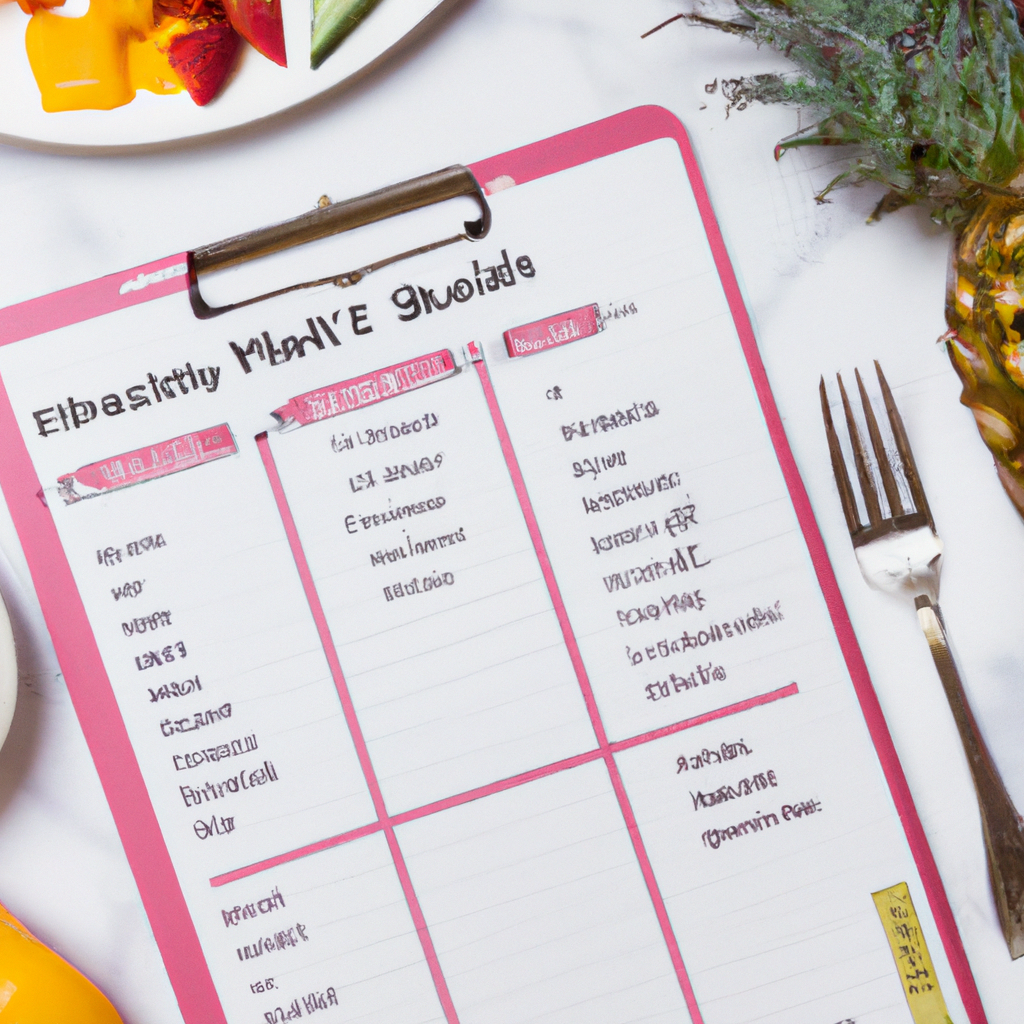Are you looking to shake up your diet and take your nutrition to the next level? Meal planning is a great way to create a nutritious diet plan without sacrificing flavors or breaking your budget. With some meal planning tips and simple recipes, you can easily plan your meals and develop a healthy and sustainable diet. Read on for Meal Planning 101: How to Create a Nutritious Diet Plan.
1. Taking the Mystery Out of Meal Planning
Meal planning can be an overwhelming task with so many things to consider. But, with a little bit of insight, you can remove the mystery and unleash your inner chef! Here’s how: Figure out what you need before starting. Make a list of staples like eggs, butter, and milk, and favorite spices and herbs, so you can always have them on hand.
- Fruits and vegetables that can stay fresh for a few days.
- Proteins like meat, fish, or tofu.
- Grains like pasta and rice.
Next, take stock of your kitchen. Look in the pantry, freezers and fridge to see what else you need. Take an inventory of how much of each item you have, and edit your list of items to pick up accordingly.
Once you have your grocery list ready, plan your meals for the week. Start by writing down dinner ideas for each night, then work around those ideas for lunch and breakfast. For example, if you plan to cook tacos for dinner on Tuesday, use the leftovers for Wednesday’s lunch. You can repeat this tactic throughout the week, using whatever ingredients you have.
Finally, consider your lifestyle. Do you want to try out a new recipe? Are you short on time? Let that inform how you plan your meals. Make a mix of family favorites and new dishes, and keep some simple go-to recipes around for busy days. With just these simple steps, meal planning doesn’t have to be a mystery anymore!
2. Shopping for Healthy Ingredient Options
As essential part of a healthy lifestyle is monitoring what you eat. A great way to do this effectively is by shopping smartly and strategically. When shopping for healthy ingredients, there are several steps to consider.
- Choose Organic Options: Not only are organic options better for the environment, but also for your health. Organic food has been grown without the use of pesticides or synthetic fertilizers. This way, you know you’re not adding any unnecessary toxins into your body.
- Select Produce With the Fewest Ingredients: It’s easy to be fooled by terms like “organic” and “natural.” The best way to ensure your produce is healthy? Take a look at the ingredients label. If you’re picking up a single-ingredient item like a tomato or a carrot, you can be sure you aren’t getting any unhealthy additives.
- Think Plant-Based: Plant-based food is known for its high nutritional value. Think low-calorie item like avocados, spinach, and cauliflower, but also include high-fiber fare like oats, black beans, and quinoa. These items provide your body the nutrients and vitamins it needs.
Additionally, opt for fresh produce whenever possible. Frozen products often contain high amounts of sodium, so choosing fresh produce is the way to go. The exception to this rule is if you’re opting for frozen produce that is low in calories and free of added salt, preservatives, or fats.
Healthy shopping isn’t complicated, but it does take some strategic planning and the ability to read the nutritional labels. Once you’ve got the hang of it, healthy eating will become a daily habit. You’ll be able to create delicious and nutritious meals for your family that help promote a healthy lifestyle.
3. Prepping Your Week’s Meals in Advance
Preparing meals in advance for the week can be an effective way to save time and energy during the week and ensure that you are eating a variety of nutritious foods. Here are some tips for prepping your weekly meals in advance:
- Organize Your Supplies – Gather your essential ingredients and materials, such as cutting boards, pans, pots, and utensils. Make sure that you have enough containers, wrap, and bags for all your prepped meals.
- Plan Your Meals – Before you start prepping, plan out what meals you will make for the week. This will ensure that you have all the ingredients you need on hand and can make the most of them.
- Cook Your Meals – Now, get down to business! If you want to save time, you can make large batches of food so that you can have enough meals for the week. You can also cook some of your meals in advance and freeze them for a later date.
- Store & Label Your Meals – Once you’ve cooked your meals, store them properly. You may want to invest in airtight containers if you’re prepping freezeable meals. Make sure to label your meals with the type and date for easy tracking.
- Clean Up – Clean up your workspace and make sure all ingredients and materials are put away properly. This will make it easier for you to prep meals for the next week.
These tips will help you get started prepping meals in advance for the week. Preparing your meals can take some time and effort, but it can pay off in the long run with less time spent in the kitchen during the week.
Prepping your meals on the weekend can be an effective way to save time during the week and ensure that you are eating nutritious and delicious food. So get prepping and get cooking!
4. Establishing a Nutritious Diet Plan
Setting up a good nutrition plan is essential to your health and wellbeing. It’s important to eat the right amount of food, and the right type of food, in order to feel your best. Here are some tips to help you develop a nutritious diet plan:
- Choose nutrient-rich foods: Load your plate with fruits, vegetables, whole grains, lean proteins, and healthy fats for the most nutrients possible. Also, look for foods that are naturally high in vitamins and minerals, such as dark leafy greens and other colorful produce.
- Limit processed foods: Try to minimize your intake of foods that come from a box, bag, or can. These items are typically higher in calories and unhealthy fats, and much lower in nutrition.
- Manage portion sizes: It’s possible to meet your nutritional needs without eating too much food. Use your hands as portion control gauges: a fist-sized portion of fruits and veggies, a palm-sized portion of proteins, and a cupped handful of carbs.
- Mix and match: Coming up with meal ideas can be challenging if you’re trying to eat healthy. Create a few go-to combinations with ingredients from each major food group. For example, pair roasted chicken with quinoa and vegetables, or top a salad with salmon and nuts.
- Keep track of nutrients: Use a food journal, mobile app, or computer program to track your food and nutrient intake. This will make it easier to analyze what you eat and figure out if you’re meeting your daily needs.
Drinking plenty of water and having a balanced diet are also important to overall health. Aim for a variety of nutrient-rich foods that provide enough calories for your energy level and nourish your body each day. This way, you’ll have the fuel you need to stay active and support your optimal wellbeing.
Are you ready to become a master of meal planning? With a bit of practice and a few simple steps, you can create meal plans that are delicious, nutritious, and easy to stick to. A well-planned meal will give you the flavorful sustenance and satisfaction you need to soak up all that life has to offer. Bon Appetit!





